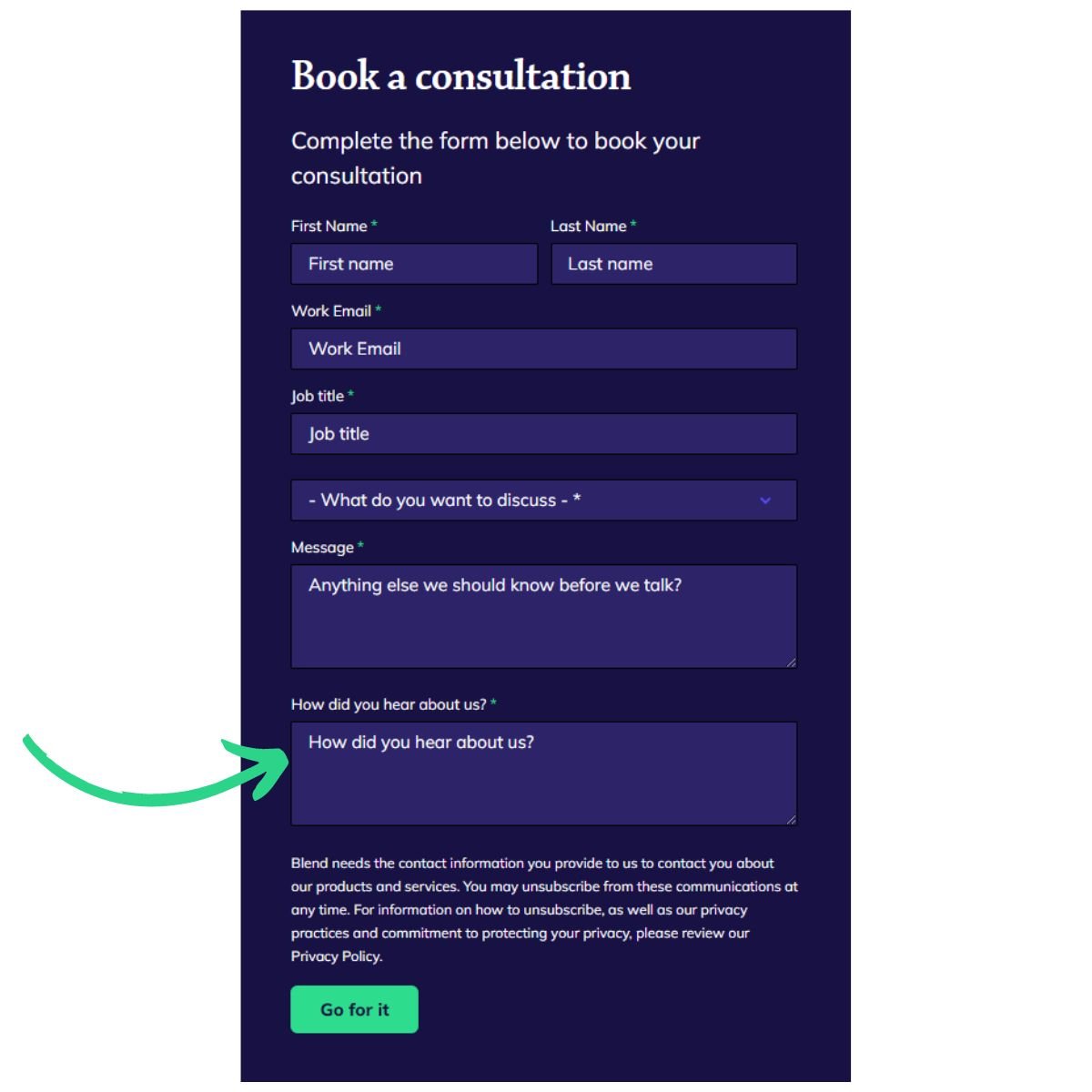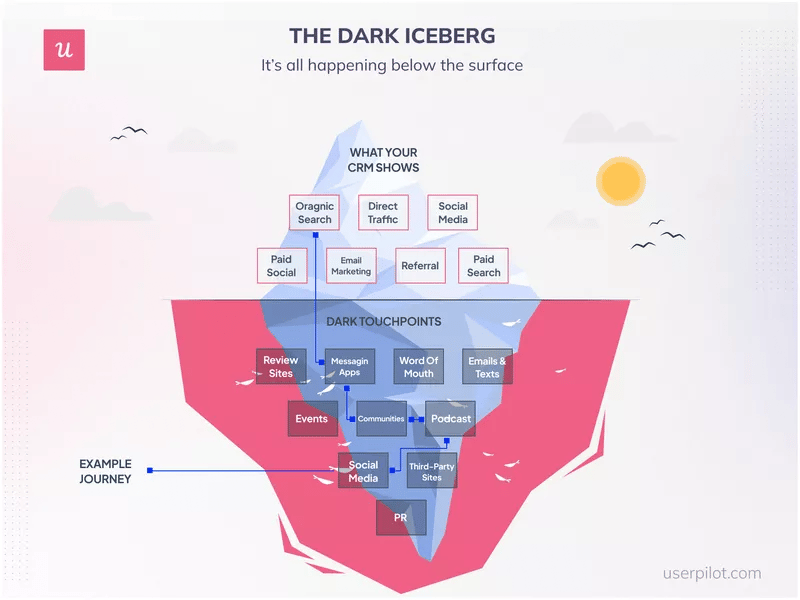LinkedIn:
When you follow the right accounts, LinkedIn can become a hub of demand generation information, just be sure to take advice from credible sources.
Dan Stillgoe
Dan has experience in driving a lead generation to demand generation motion. As well as posts on how to create and capture new demand, Dan puts a lot of focus on how to ensure your revenue operations are set up to convert and measure success.
Sarah Breathnach
An experienced, 3x early-stage startup demand generation leader. You can expect posts on how to ditch old-school marketing tactics in favour of demand generation tactics that focus on generating revenue.
Myles Madden
Myles is a demand generation expert, working for both agencies and in SaaS, he provides actionable advice that marketers can use right away.
Adam Holmgren
As well as being a demand generation leader at a SaaS company, Adam hosts the Driving Demand Podcast, giving him insight into what other marketers are doing to drive success.
Obaid Durrani
Obaid is a content expert. He knows how to create unique content that will resonate with your audience. After successfully growing his own content marketing agency, he now advises B2B technology creator teams.
Dave Gerhardt
One of the most well-known names on this list, Dave Gerhardt, is an experienced C-level marketing executive with a wealth of knowledge on generating demand. Previously VP of Marketing and Drift and CMO at Privy, Dave is now the founder of Exit Five, a paid-for community for B2B marketers.
Podcasts:
Listen to in-depth conversations and advice and industry leading experts.
Demand Decoded - by Blend
Our show focuses on breaking the mold of traditional B2B marketing tactics, providing actionable insights that you can use to transform your marketing into a revenue generating machine. With a team of experts from Blend as our main hosts, we delve into the latest trends and strategies in B2B marketing.
Listen to the latest episode:
Demand Gen U Podcast – by metadata.io
Hosted by the marketing leaders at metadata.io, Demand Gen U goes deep on one topic to bring you actionable, no fluff B2B marketing lessons that they’ve learned along the way. In each episode, the Metadata team shares their successes (and failures) and teaches you what they’re doing to drive results. Get practical frameworks, tactics, and ideas you can immediately apply in your role.
Fullfunnel Podcast – by Fullfunnel.io
Every week Fullfunnel.io founders Andrei Zinkevich and Vladimir Blagojevic sit down with B2B marketing and sales leaders to discuss all things related to B2B marketing: from developing and executing account-based marketing programs to deal expansions.
Stacking Growth – by Refine Labs
Stacking Growth is a live event series, hosted by Refine Labs, which is released afterwards as a podcast. Each episode is hosted by different members of the Refine Labs team, from content executives, creative designers, advertising specialists and demand generation leaders, giving you a broad range of advice to generate demand.
Exit Five – by Dave Gerhardt
As well as appearing on our LinkedIn list, Dave Gerhardt also hosts his own podcast - Exit Five. In this podcast, Dave and guests their marketing knowledge to help you drive revenue at your company and grow your career as a marketing pro. The podcast mostly covers B2B demand generation marketing, but there's something for anyone working in a marketing role today.
Blogs:
A more conventional way to gather expert advice and solve problems.
Blend
Our blog is full of tips and insights to help B2B marketers overcome their challenges. Our blog is written exclusively from an inbound demand generation perspective by experts within the agency. Our content provides insight into marketing strategy, website design, content marketing, paid search ads, paid social media ads, marketing operations... and more!
Demand Gen Report
The Demand Gen Report blog is a great place to find a balanced source of demand generation insights, news and thought leadership from leading B2B marketers. The wide range of authors contributing to the blog provides access to an array of diversified opinions and actionable tactics.
HubSpot
Whilst HubSpot is synonymous with lead generation, their blog still offers a stream of content that’s relevant to B2B demand marketers. It’s split into five main categories: marketing, sales, service, website, and tech news – giving you a broad range of content to support your marketing.
Books
Go in-depth on a topic and let your mind wander.
Epic Content Marketing: How to Tell a Different Story, Break through the Clutter, and Win More Customers by Marketing Less
Author Joe Puluzzi is one of the world’s leading experts on content marketing. In this book he explains how to effectively use content to attract prospects and generate revenue by creating information that buyers want to engage with. The days of interrupting customers with mediocre content and sales messages are over.
Content Rules: How to Create Killer Blogs, Podcasts, Videos, Ebooks, Webinars (and More) That Engage Customers and Ignite Your Business
This book identifies ways to create the stories, videos and blog posts that drive demand for your solutions and grow your business. This book combines actionable takeaways with successful case studies to show you how content can drive demand for real.
Perennial Seller: The Art of Making and Marketing Work that Lasts
Ryan Holiday’s ‘Perennial Seller’ concept underpins the creation of something that’s built to last. This book is all about how to create things that can and should last in a world where short-term gain and ‘hacks’ are so prominent, it features interviews with some of the world's greatest entrepreneurs and creatives.
The Storytelling Edge: How to Transform Your Business, Stop Screaming into the Void, and Make People Love You
Smart businesses today understand the need to use stories to better connect with their audience. In this book, content strategists Joe Lazauskas and Shane Snow offer an insider's guide to transforming your business—and all the relationships that matter to it—through the art and science of telling great stories.



.jpg?width=1372&height=646&name=Demand%20Generation%20Funnel%20(2).jpg)

